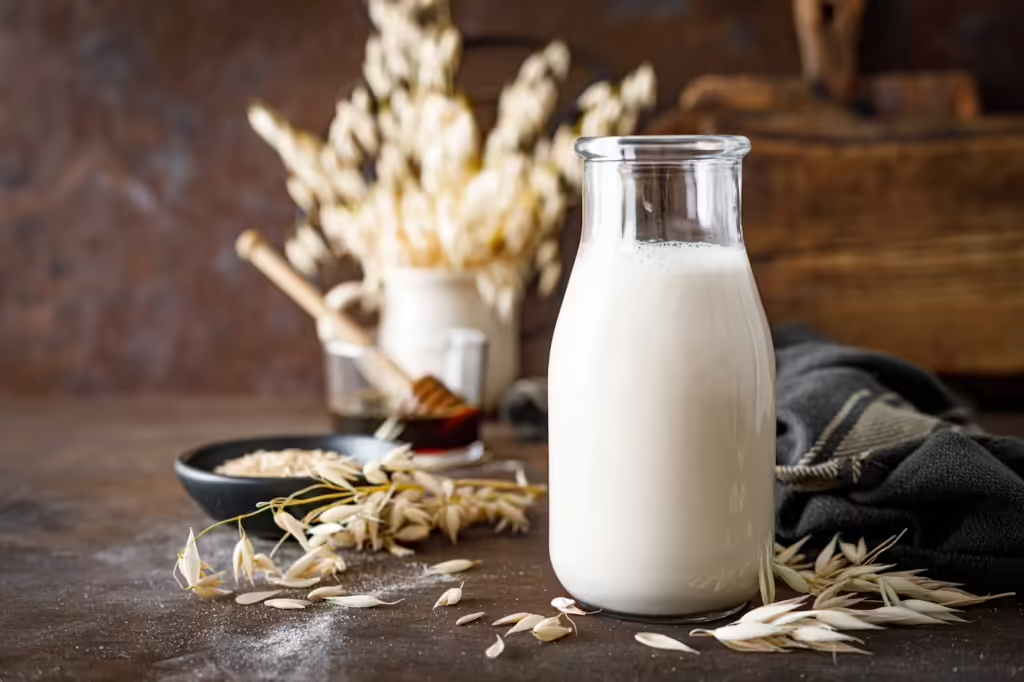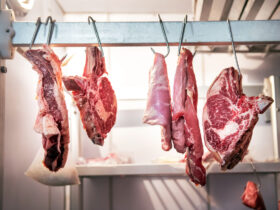Lorem ipsum dolor sit amet, consectetur adipiscing elit. Ut elit tellus, luctus nec ullamcorper mattis, pulvinar dapibus leo.
What is Milk Made Of?
Milk, primarily sourced from cows, sheep, and goats in our regions, is a complex amalgamation of various components. Here are the key constituents of milk, particularly cow’s milk, which is the most commonly consumed:
Water: Constituting approximately 87% to 90% of milk, water makes milk a hydrating beverage.
Fats: Milk contains about 3% to 5% fat, with variations depending on the type (whole milk, skim milk, etc.). These fats exist in the form of tiny fat globules and encompass various fatty acids, including saturated and unsaturated fats.
Proteins: Milk comprises around 3% protein. The primary proteins in cow’s milk are casein and whey proteins, essential for growth and development, boasting high nutritional value.
Carbohydrates: The primary carbohydrate in milk is lactose, a milk sugar constituting approximately 4% to 5% of milk. Lactose serves as a vital energy source and contributes to the milk’s sweet taste.
Vitamins and Minerals: Milk serves as a rich source of various vitamins and minerals, including calcium, phosphorus, B-vitamins (especially B12 and riboflavin), vitamin A, and vitamin D (in fortified milk). Calcium is crucial for strong bones and teeth, while B-vitamins are essential for metabolism.
Enzymes, Hormones, and Other Bioactive Components: Milk also contains small amounts of enzymes, hormones, and other bioactive substances that may serve various functions in the body.
This composition can vary depending on factors such as the animal species (cow, goat, sheep, etc.), animal feed, genetic factors, and processing methods. For example, milk from grass-fed cows may have higher levels of certain fatty acids such as omega-3 fatty acids and conjugated linoleic acid (CLA).

A Cow's Milk Yield
A cow’s milk yield depends on its breed, age, and feed. The more frequently a cow calves, the more milk it produces. While after the first calf, a cow yields around 22-30 liters, after the third calf, it nearly doubles its milk yield.
The Life Cycle of a Dairy Cow
After birth and rearing, a cow becomes pregnant for the first time. Once it gives birth to its first calf, milk production commences. To maintain milk production, cows are typically milked twice daily. Thus, in industrial milk production, dairy cows are impregnated annually, calving once each year. The entire life cycle of a dairy cow lasts approximately six years. Subsequently, dairy cows are either relocated to resting areas or sold to the meat industry.

Germany: Leading Milk Producer in the EU
Germany annually produces over 30 billion tons of milk! (32,442,000,000) – for comparison, France produces approximately 24 billion tons, and Italy only 11 billion tons. Milk production stands as the most significant branch of German agriculture.
Water Consumption in Milk Production
Industrial milk production is highly resource-intensive and can have significant environmental impacts. Approximately 3% of greenhouse gas emissions and almost 10% of nutrients accumulated in the soil are attributed to milk production.
To produce 1 liter of milk, we consume 628 liters of water. This value encompasses water directly consumed by cows, water used for cleaning and cooling in dairies, and water indirectly needed for growing cow feed. The majority of water consumption is attributed to feed cultivation, as cultivating feed crops like grass, corn, and soybeans requires considerable water.

Decline in the Number of Dairy Farms: Rising Dairy Cow Numbers
In recent years, the number of dairy processing farms in Germany has declined, while the number of dairy cows has steadily increased. This trend is attributed to rising cost pressures and the acquisition of smaller farms by large dairy processing enterprises.
Smaller Farms: A More Sustainable Choice
Contrary to popular belief, larger farms are not necessarily more sustainable or environmentally friendly. Besides bolstering the regional economy, several aspects advocate for smaller dairy farms:
Grazing: Smaller farms often practice grazing, which can promote better animal health and reduce emissions per animal.
Diversification: Smaller farms are often more diversified, resulting in less reliance on monocultures and fostering biodiversity.
Lower Resource Intensity: Smaller farms often employ less intensive methods, leading to lower energy consumption and emission

Comparison: Milk vs. Milk Alternatives
Cow’s Milk
Greenhouse Gas Emissions: Cow’s milk production is associated with significant greenhouse gas emissions, primarily methane emitted by cows as part of their digestion.
Land Use: Cow’s milk production requires extensive land for growing feed crops and livestock husbandry.
Water Consumption: Producing cow’s milk requires a substantial amount of water, both directly for animals and indirectly for cultivating feed crops. Biodiversity: Monocultures for feed and land conversion into pasture areas can impact biodiversity.
Plant-Based Alternatives
Soy Milk: Soy has relatively low water and land requirements and is more efficient in terms of greenhouse gas emissions compared to cow’s milk. However, soybean cultivation in some regions may be associated with deforestation and habitat loss.
Almond Milk: Almond milk has lower greenhouse gas emissions than cow’s milk but requires significant water, especially in California’s growing regions, where the majority of almonds are grown.
Oat Milk: Oat milk is generally environmentally friendly, with relatively low emissions and water requirements. Oat cultivation can also have positive effects on soil health.
Rice Milk: While rice milk has low greenhouse gas emissions, its water consumption is high, as rice cultivation typically requires ample water.
Coconut Milk: Coconut milk typically has low greenhouse gas emissions, but coconut cultivation may bring issues such as soil erosion and biodiversity loss.














Leave a Reply
View Comments